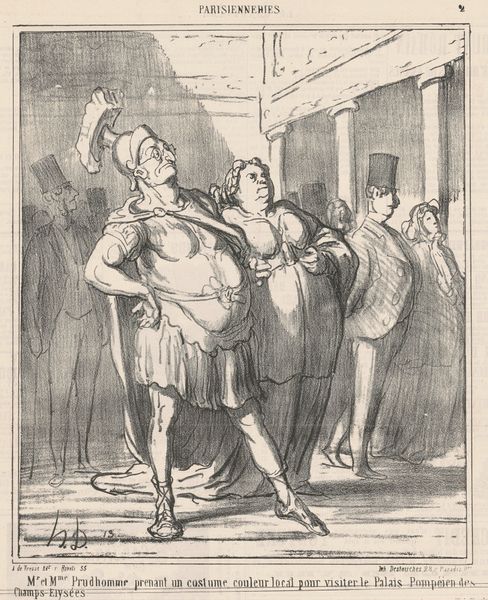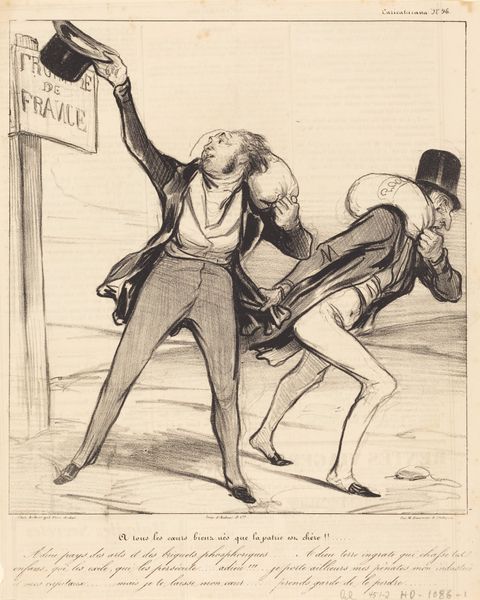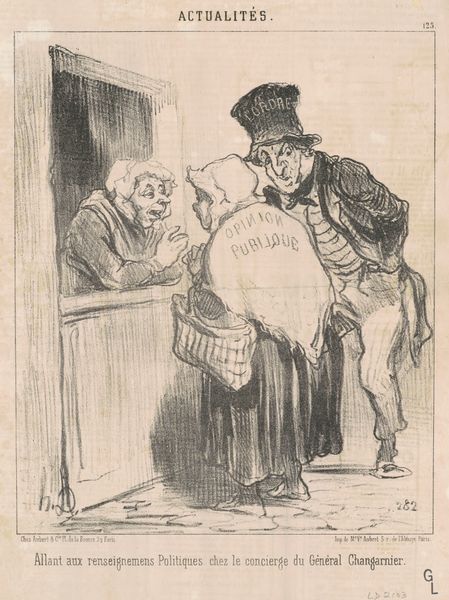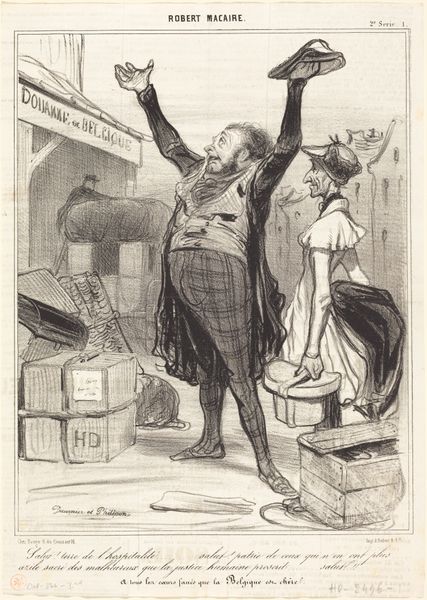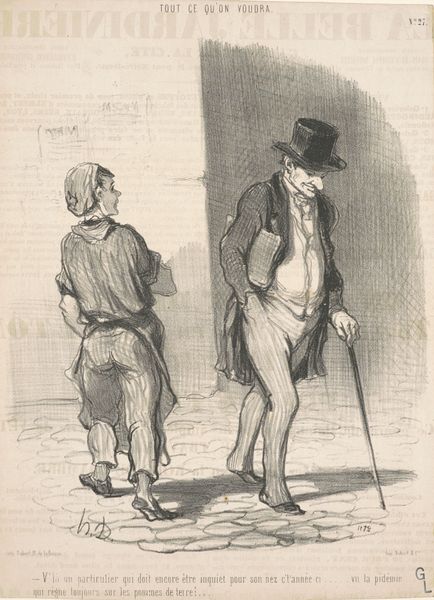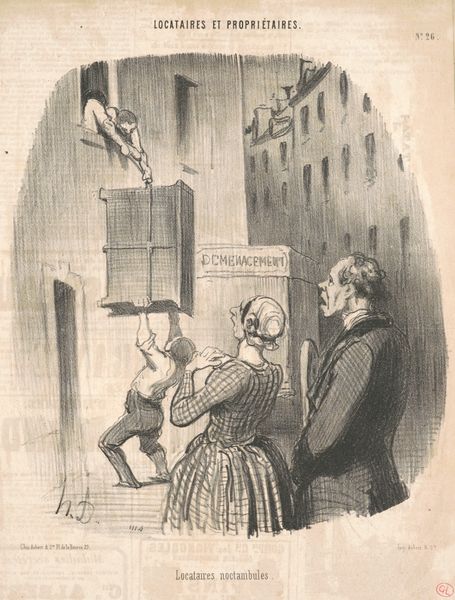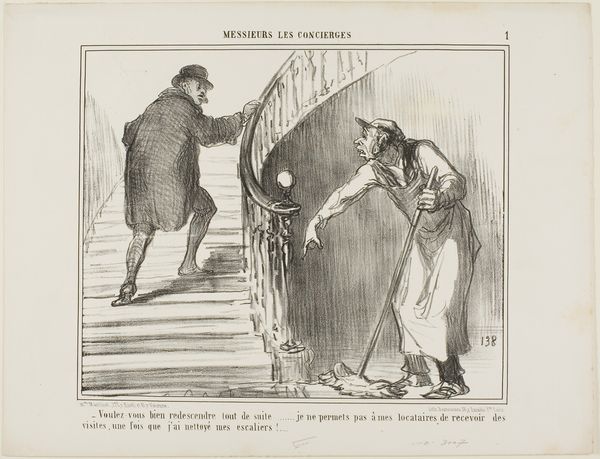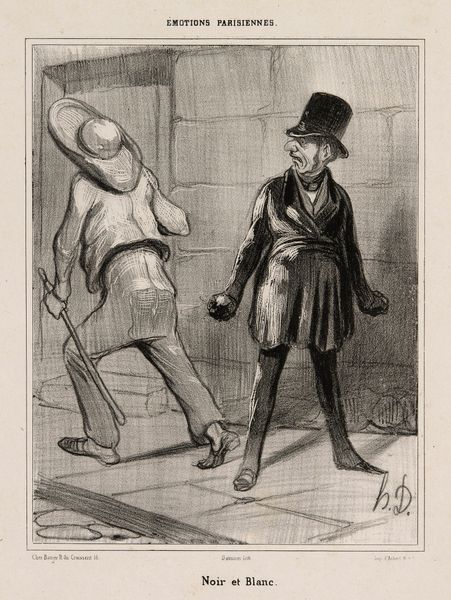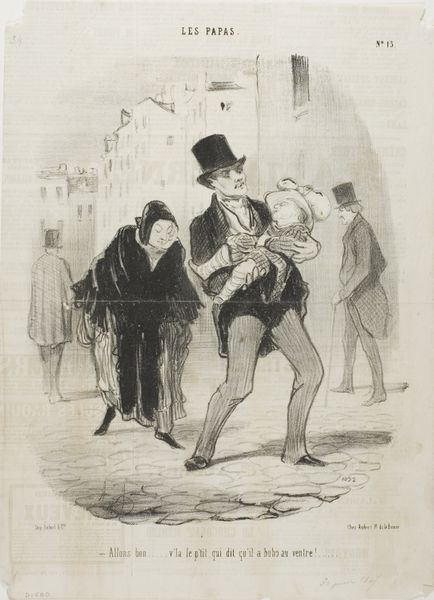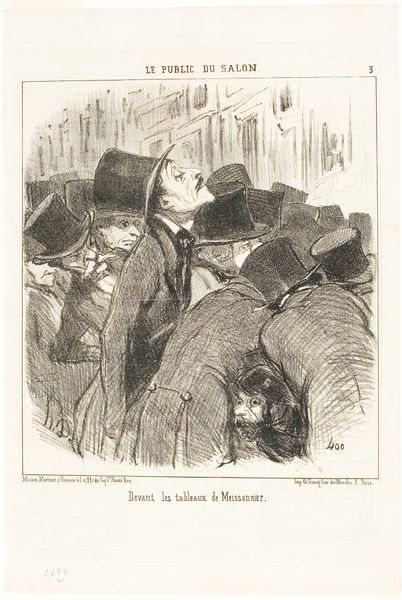
lithograph, print
#
lithograph
# print
#
caricature
#
genre-painting
#
realism
Copyright: National Gallery of Art: CC0 1.0
Curator: Editor: This is Honoré Daumier’s 1851 lithograph, "Le Commerce un jour d'échéance". It’s a chaotic scene, with exaggerated figures rushing about, seemingly consumed by financial pressure. What do you see in this piece? Curator: This print is more than just a comical depiction of commerce. Consider the era: France, in the throes of industrial capitalism. Daumier's sharp wit exposes the anxieties and vulnerabilities of the working class caught in the gears of a system that prioritizes profit over people. The figures appear desperate, almost dehumanized. The 'Mont de Piété,' the pawn shop, looms as a symbol of last resort. Does this reading resonate with you? Editor: It does, especially the dehumanization aspect. The caricatures definitely emphasize that. But is it solely a critique of capitalism? Curator: While critical of capitalism, the print speaks to broader themes of societal power imbalances. The pawnbroker, for example, profits from the desperation of others. This creates a commentary on class disparity, privilege, and the precariousness of existence for many. It invites us to question who benefits and who suffers within these economic structures. Editor: So it’s like he’s using humor to draw attention to serious social problems. Curator: Precisely. By exaggerating the figures, he amplifies their struggles and discomfort, forcing us to confront the realities of 19th-century French society – realities that, in many ways, persist today. This isn’t just about art history; it’s about understanding power dynamics that shape our world. Editor: That really changes how I see the image. I initially saw it as just a funny snapshot, but it’s clearly much more loaded. Thanks for pointing that out! Curator: Indeed, understanding art within its historical and social context unlocks deeper meaning and promotes empathy and critical thought. A powerful lesson to have when viewing any work of art!
Comments
No comments
Be the first to comment and join the conversation on the ultimate creative platform.
